- Wondering how to get Monopoly GO! free rolls? Well, you’ve come to the right place. In this guide, we provide you with a bunch of tips and tricks to get some free rolls for the hit new mobile game. We’ll …
Best Roblox Horror Games to Play Right Now – Updated Weekly
By Adele Wilson
Our Best Roblox Horror Games guide features the scariest and most creative experiences to play right now on the platform!The BEST Roblox Games of The Week – Games You Need To Play!
By Sho Roberts
Our feature shares our pick for the Best Roblox Games of the week! With our feature, we guarantee you'll find something new to play!Type Soul Clan Rarity Guide – All Legendary And Common Clans Listed!
By Nathan Ball
Wondering what your odds of rolling a particular Clan are? Wonder no more, with my handy Type Soul Clan Rarity guide.
Threes! Walkthrough
Threes! is a match-2 puzzle game developed by Sirvo LLC. In this game, you’ll slide numbered tiles around a grid in order to create ever-increasing multiples of three. Gamezebo’s quick start strategy guide will provide you with detailed images, tips, information, and hints on how to play your best game.
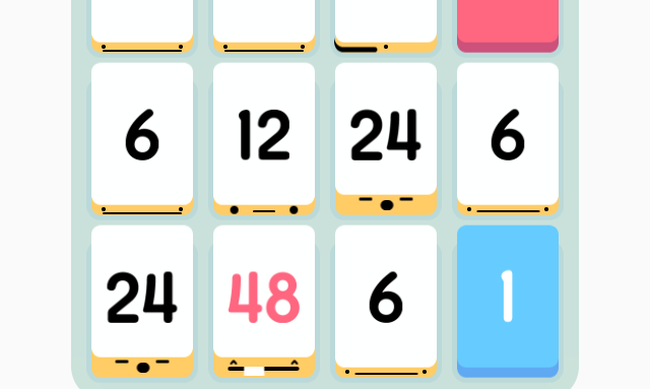
Game Introduction – Threes!
Threes! is a match-2 puzzle game developed by Sirvo LLC. In this game, you’ll slide numbered tiles around a grid in order to create ever-increasing multiples of three. Gamezebo’s quick start strategy guide will provide you with detailed images, tips, information, and hints on how to play your best game.
Quick Start Guide
Getting Started
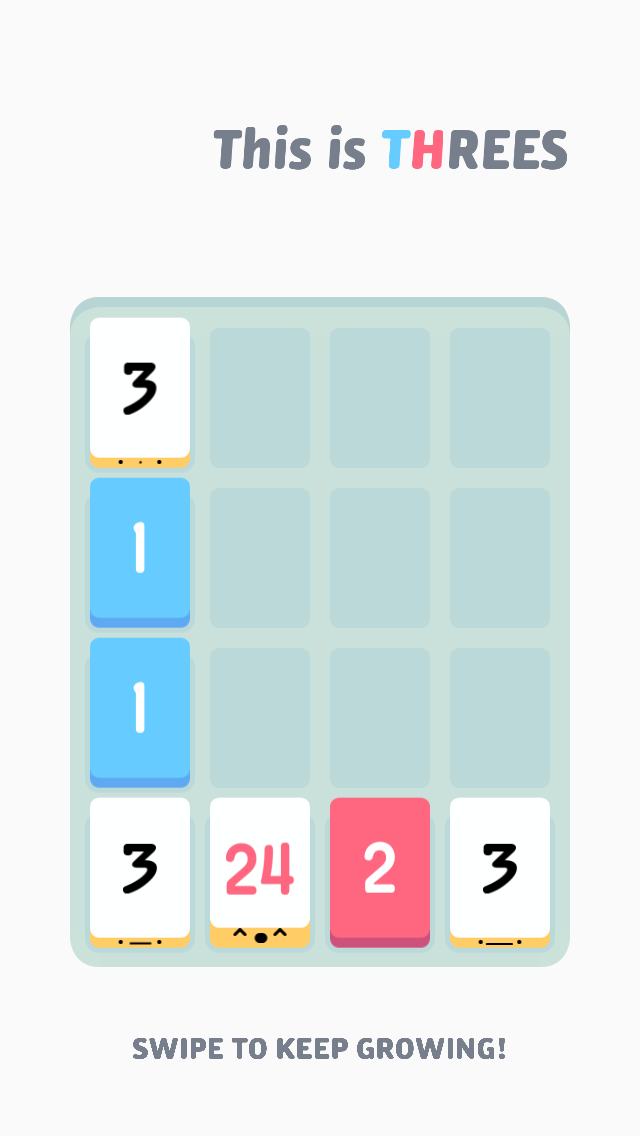
- Threes! can be purchased and downloaded by clicking the “Available on” options at the top of this page.
- When you open the game for the first time, you will immediately be sent to the tutorial, which will instruct you how to play. You must complete the tutorial, but it should only take a couple minutes.
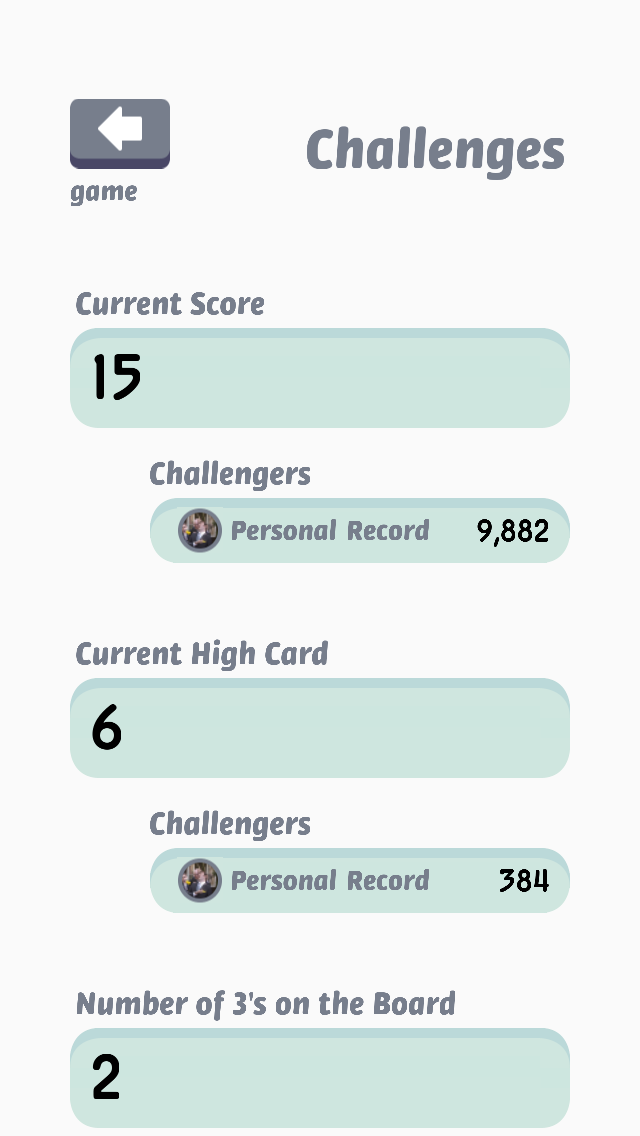
- Once you have finished the tutorial and are playing freely, select “Challenges” or “Menu.” Selecting “Challenges” will show you stats for your active game—like the current score—as well as personal bests in the categories displayed.
- “Menu” will send you to the options screen. Here you can turn the music and sound effects on or off, as well as select the “conserve battery” option.
- Swiping left from the menu options will show you past games’ scores that you or other local players have earned. These are displayed in order from highest to lowest (heading left).
- Swiping right from the menu will display the “Hall of Records,” which displays your best scores on a few different criteria. Selecting “Challenge” next to any of these lets you challenge a Game Center friend to beat your best score.
- Swiping right from the Hall of Records will display the game’s credits, special thanks, and other games by Sirvo LLC.
- To return to your current game from any of these pages, simply select “back” from the upper left corner. If you do not have an active game in progress, this button will say “retry” instead, and tapping it will start a new game.
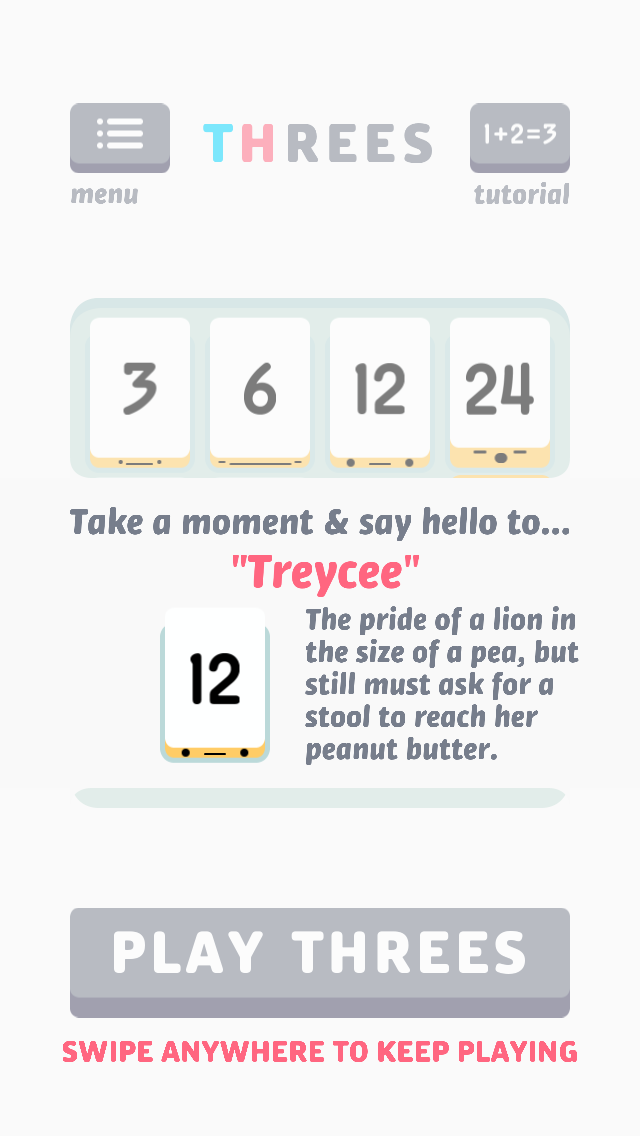
- To access the main menu, go to the menu options page and select “Main Menu.” If you have an active game in progress, returning to the main menu will end this game (it will warn you beforehand). You can only have one active game running at any given time.
- From the main menu, you can view the profiles of any numbers you have unlocked, as well as replay the tutorial at any time.
The Rules
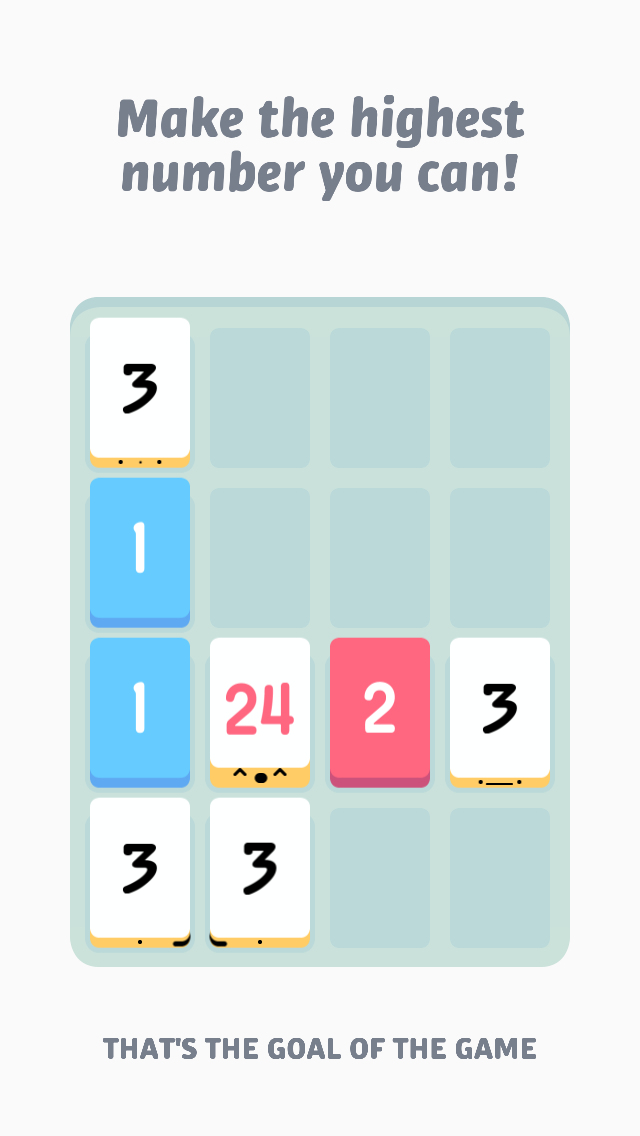
- The primary goal of Threes! is to make the largest numbers possible by combining same-numbered tiles. The secondary goal, and what makes the primary goal possible, is keeping your game board open and uncluttered so you don’t run out of moves.
- The game takes place on a 4×4 grid. Each new game begins with nine tiles randomly placed on this grid. Each tile will feature a number on it: to begin, these numbers will be either “1,” “2,” or “3.”
- The only action necessary to play Threes! is swiping: you will swipe either left, right, up, or down. When you swipe, every tile on the board will move in that same direction—if you swipe left, every tile will move one spot to the left, etc.
- There are two exceptions to this: First, tiles that are up against the wall that surrounds the grid will not move. They will remain where they are, next to the wall.
- Second, if two tiles can combine with each other and are in a row or column next to a wall, they will merge together. This rule is critical because it is the basis for combining tiles, the whole point of the game.
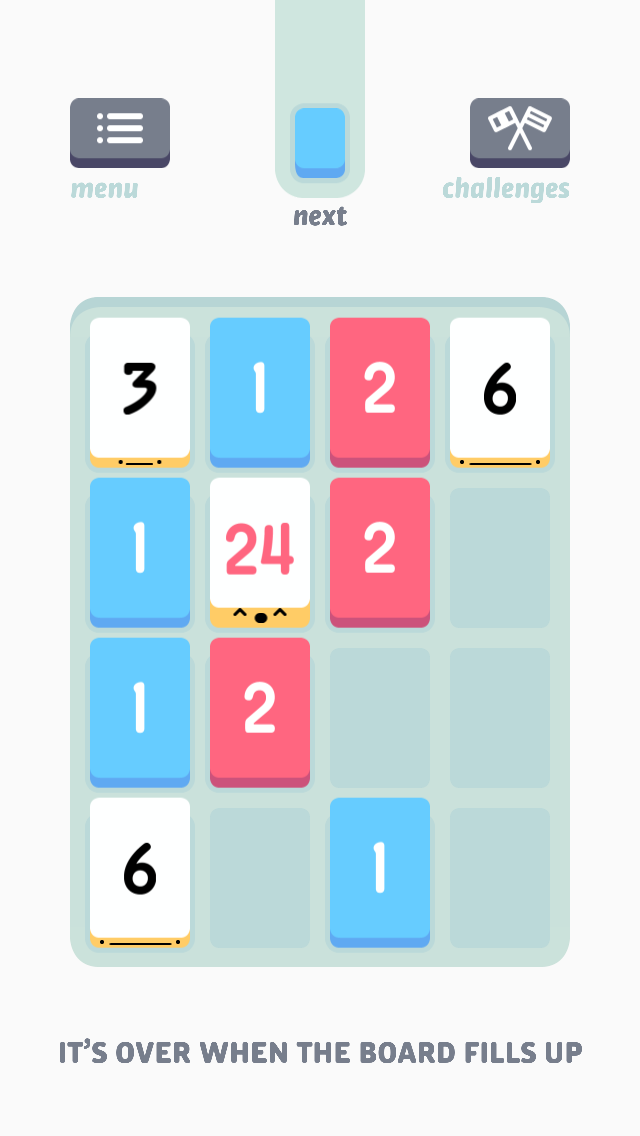
- Example: In the image above, swiping right will cause the “1” and “2” on the top row to merge into a “3.” The other three rows would simply slide one spot to the right, even though there is another “1” and “2” set—they are not against anything, and so cannot combine.
- If we were to swipe the example left, however, the “1” and “2” on the top row would still make a “3,” and the “1” and “2” in the third row would also make a “3” since they are up against the left-hand wall.
- The other important rule is that for white tiles—those numbered “3” and higher—only same-numbered tiles can combine. This means that “3” and “3” will combine to make “6,” but “3” and “6” cannot combine to make “9.” For white tiles, only matching tiles merge.
- The blue and red tiles, “1” and “2” respectively, must merge with each other to form “3.” If you have a red “2” on the board, it will need a blue “1” in order to merge.
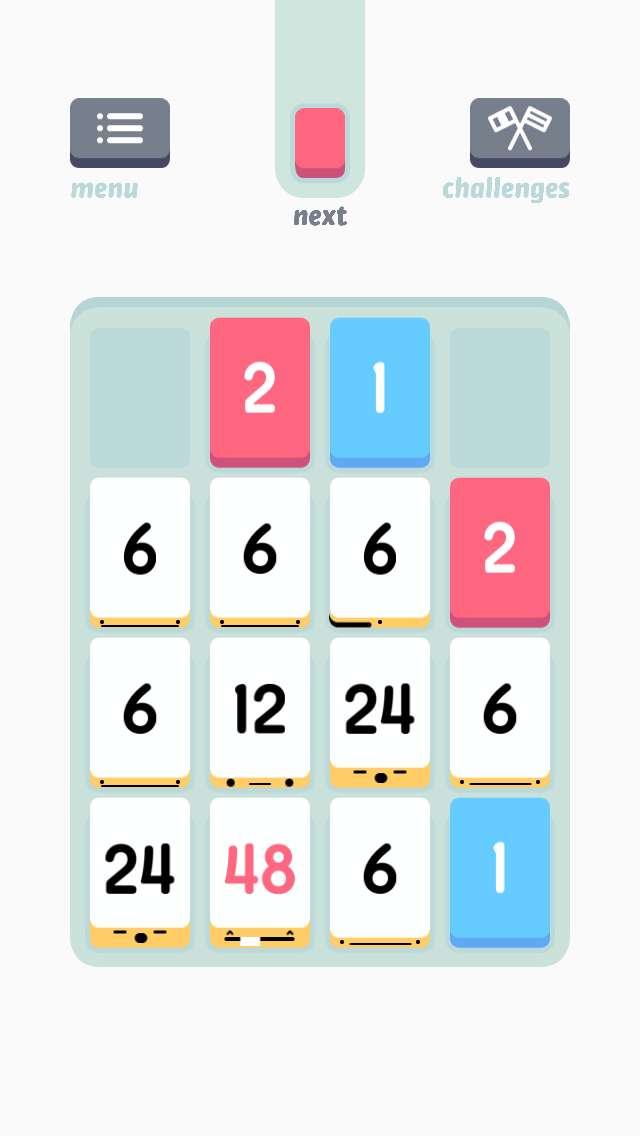
- Finally, you can make multiple matches on a single swipe, but only for tiles in different rows or columns. A single row with four “3” tiles will not turn into “12” in one swipe—it will make one “6” tile and two “3” tiles.
- In the example above, the second row contains three “6” tiles. If we swiped right, the middle and rightmost “6”s would combine to form a “12” next to the “2.” If we swiped left, the leftmost and middle “6”s would combine to form a “12,” with the third “6” to their right.
How to Play
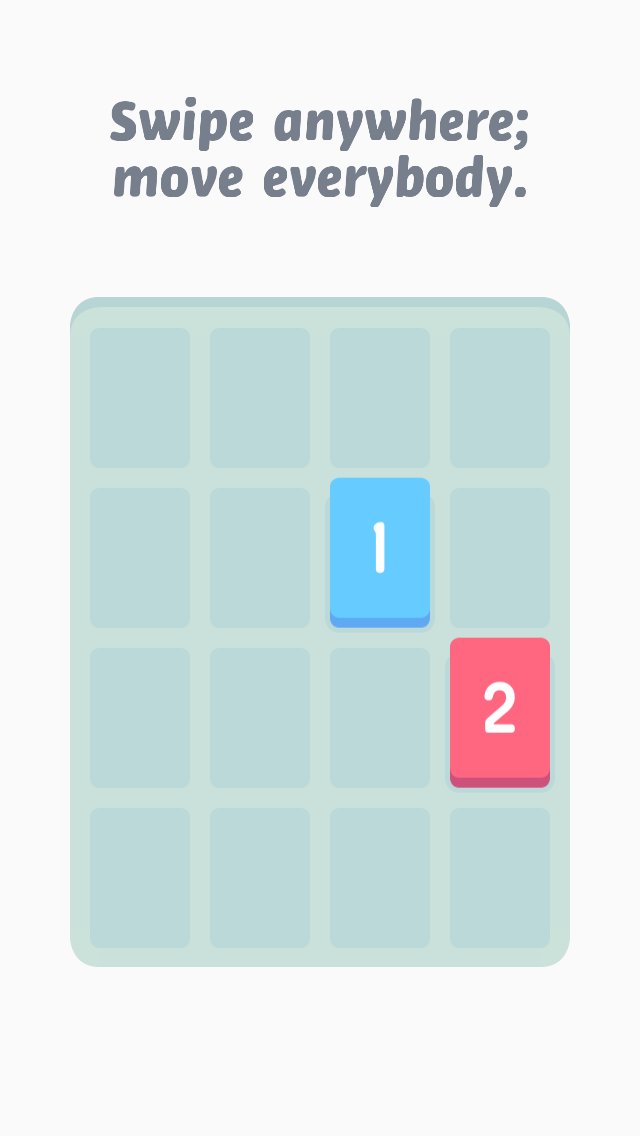
- Every turn consists of making one swipe, either left, right, up, or down. If you attempt to swipe in a direction you cannot—such as left when all of the rows are butted up against the left-hand wall—it will not count as a turn. Nothing will happen (except your tile-characters will make a “Nuh-uh!” noise).
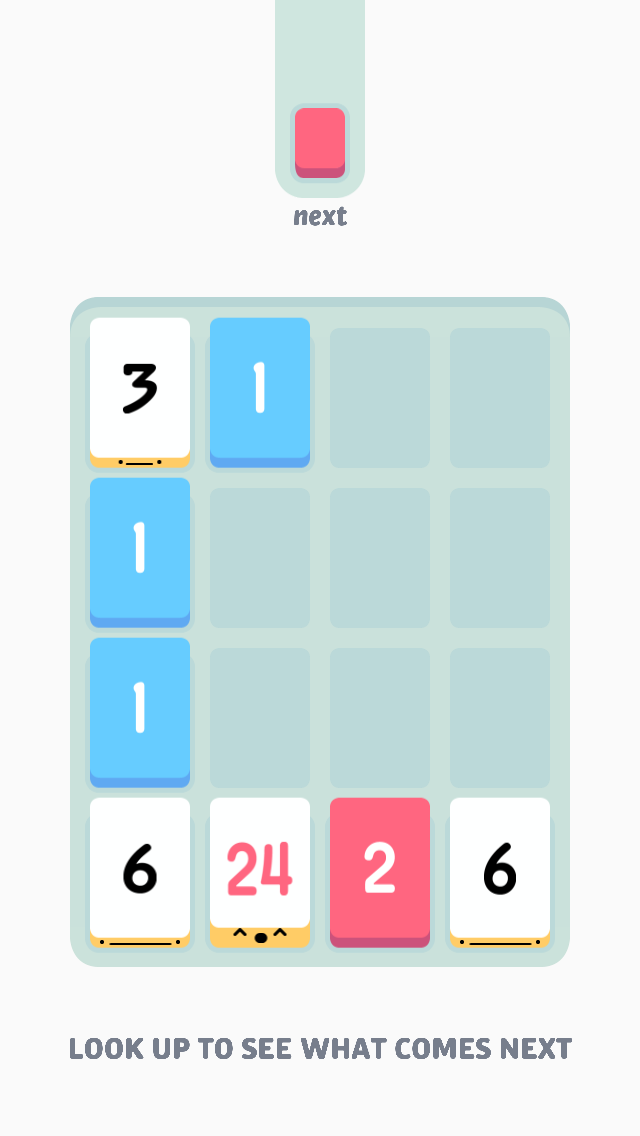
- At the end of each turn, a new tile will enter the board. What type of tile it will be is previewed in the box at the top-center of the screen. The preview will tell you if it’s a “1”—blue, a “2”—red, or a “3” or above—white.
- In the image above, a red “2” is on deck and will appear after our next swipe.
- These new tiles will only enter the board on 1) a row or column that moved on the last turn and 2) the last spot on the board opposite the direction you just swiped.
- Let’s look at this idea more closely in the following examples, in which a red “2” is on deck.
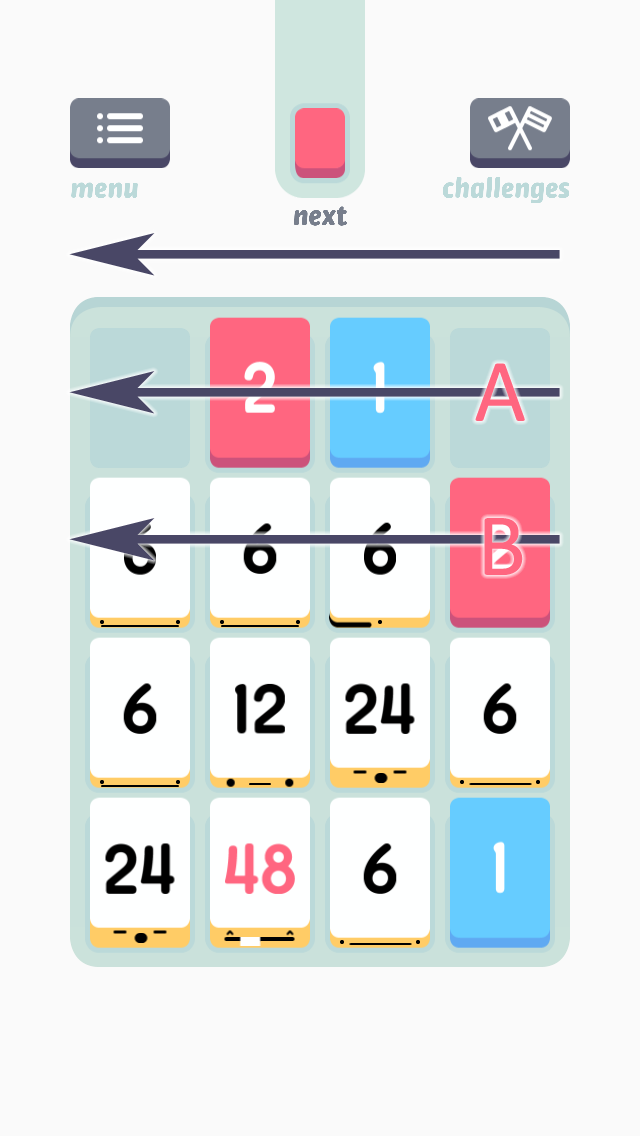
- Example 1: We swipe left. The top two rows are the ones that will move—the top row because there is an empty space, and the second row because the two “6”s will combine into a “12.” The on-deck “2” will show up at either A or B.
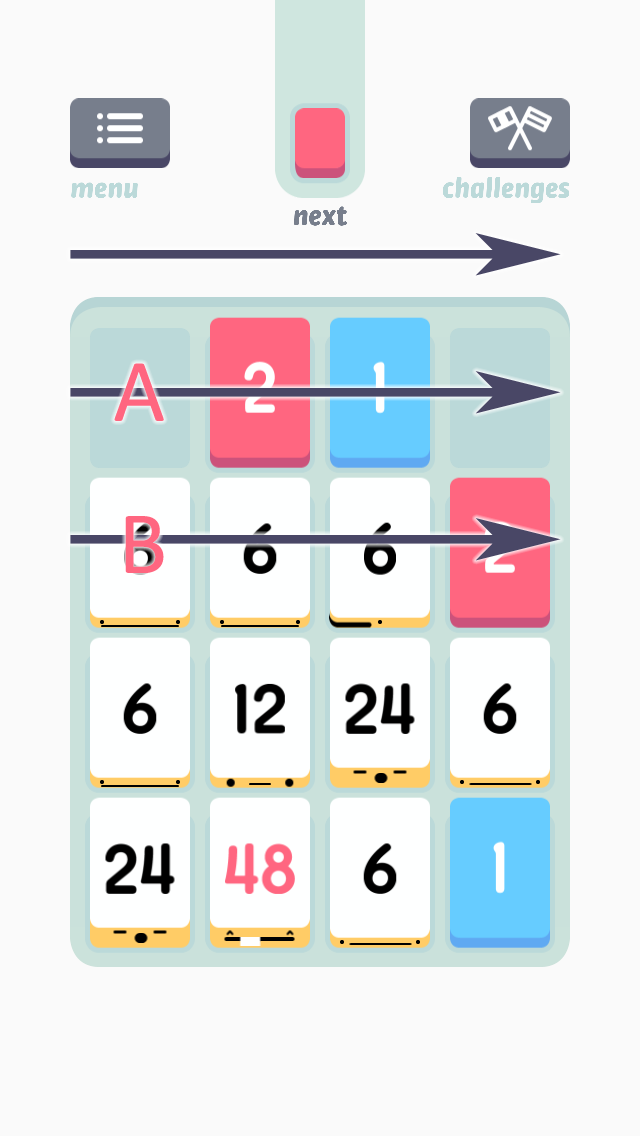
- Example 2: We swipe right. The top two rows are again the only ones that will move, but the “2” will now show up on the left side at A or B.
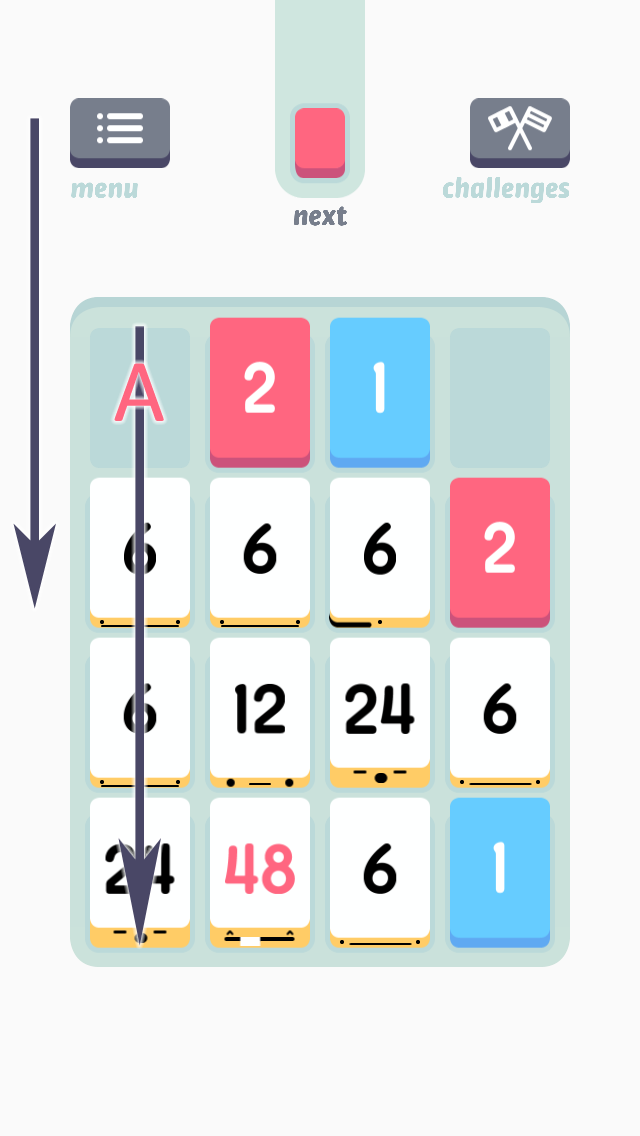
- Example 3: We swipe down. Only the first column will move, since everything else is butted up against the bottom wall without a merge available. So we know the “2” will appear at A.
- While you’re swiping and making moves, your two goals are to match same-numbered tiles to make larger numbers, and to be aware of what and where new tiles are going to enter the board. Which is more important is situational, but if a “2” is about to enter, you will want to get it next to a “1” if at all possible.
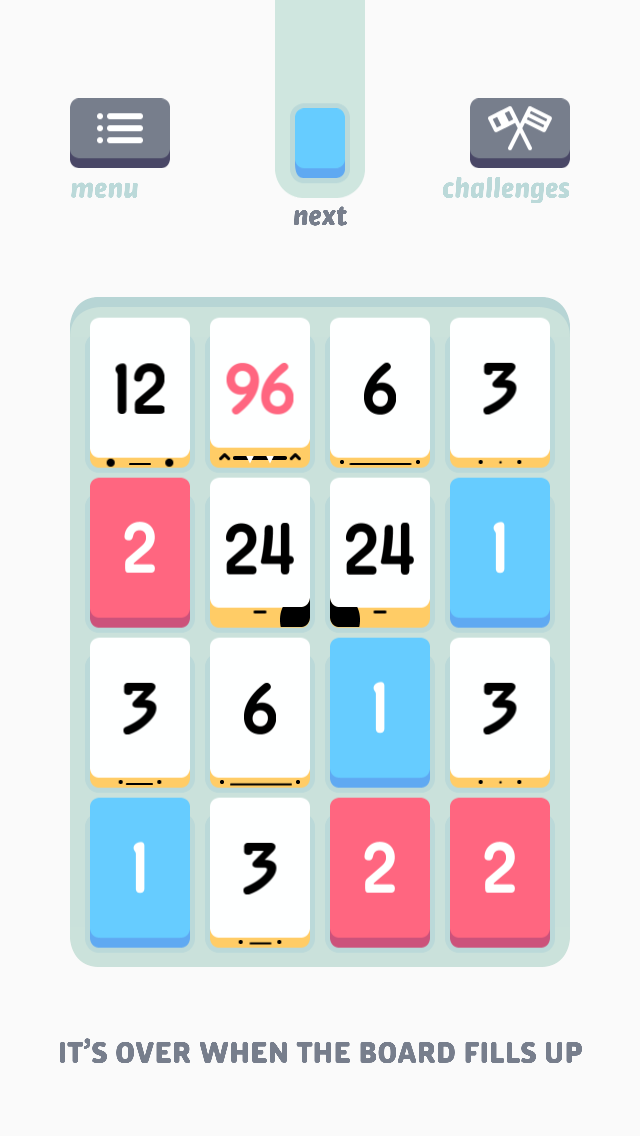
- The game ends when the board fills up with tiles and you can make no more matches. Note, even if the board is full—with no empty spaces—if you can merge at least two tiles, you can still keep playing.
- The board in the image above is full, but there are still matches available, so the game is not over.
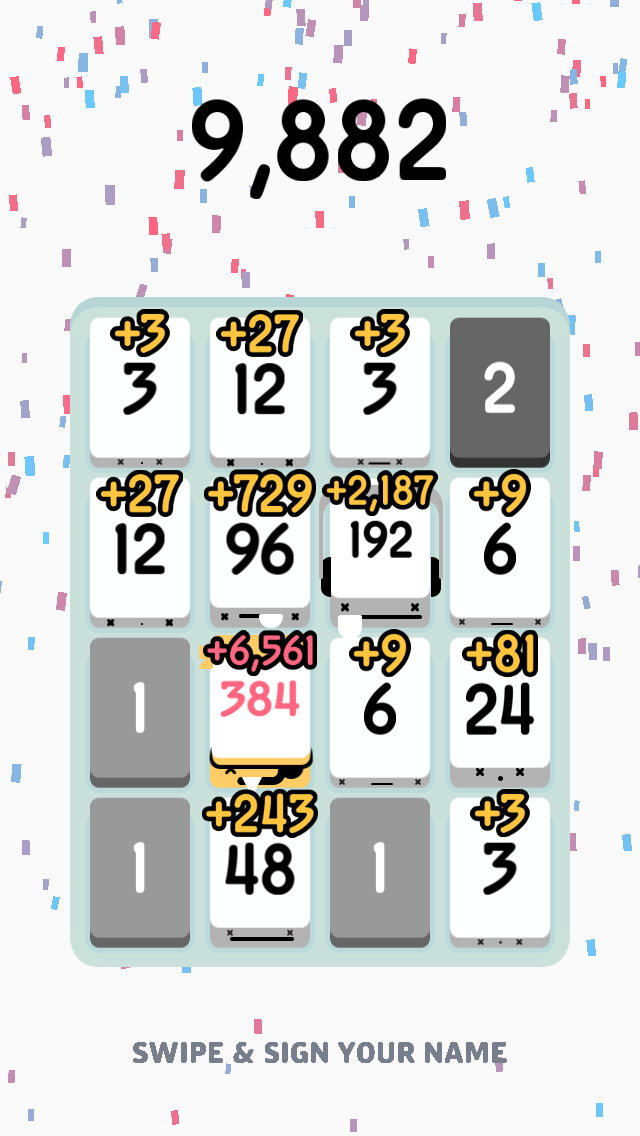
- At the end of the game, all of the white tiles on the board will be added up to generate your total score. “1” and “2” tiles have no value.
- White tiles are not worth their numerical value, but usually a larger amount. Touch Arcade forum user kamikaze28 deciphered the formula used for figuring out scores and thus the amount each tile is worth:
- 3: 3 points
- 6: 9 points
- 12: 27 points
- 24: 81 points
- 48: 243 points
- 96: 729 points
- 192: 2,187 points
- 384: 6,561 points
- 768: 19,683 points
- 1,536: 59,049 points
- 3,072: 177,147 points
- 6,144: 531,441 points
Tips
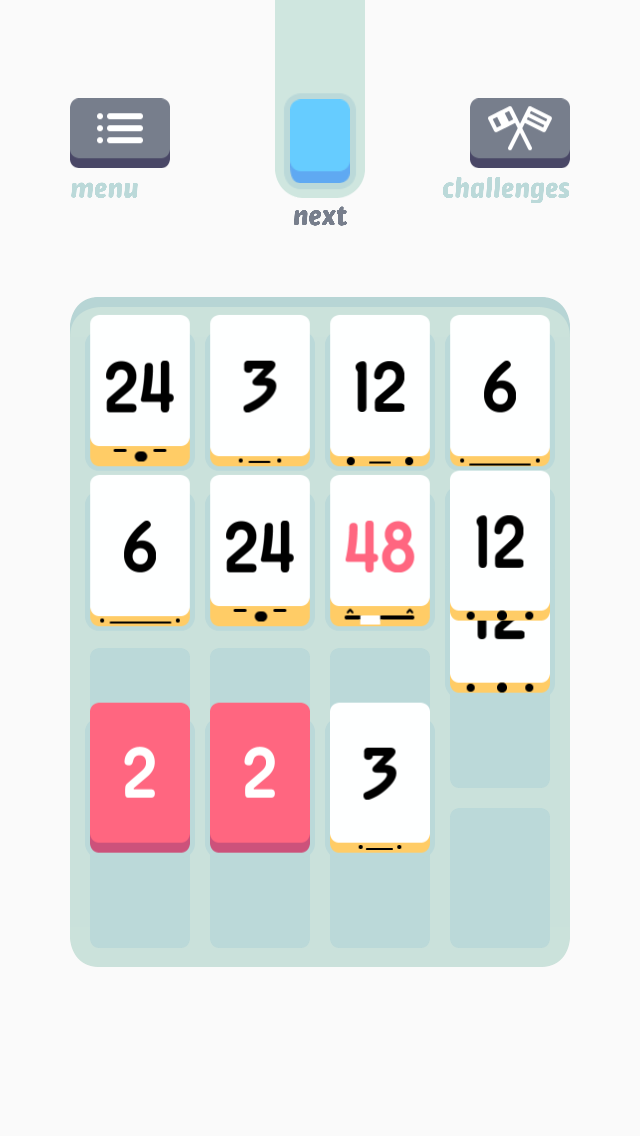
- Utilize the “slow drag” option. If you drag your finger slowly in a direction, the game will preview what will happen. If tiles are going to merge, it will show them overlapping. If tiles are simply going to move, they will just slide over. While this seems like obvious information, actually visualizing the end result of a move can make you realize that it’s not the wisest decision at that point. Note: be sure to drag back to the original starting point, otherwise the game may go ahead and make the move you just previewed.
- Don’t feel rushed to make a move. There is no time or turn limit in Threes! Check all your options and consider the move after the one you’re about to make. Does what you’re about to do set you up for a second move? Are you stranding a bunch of tiles away from their like-matches? The quickest way to lose a game is by not preparing at least two moves ahead.
- Control the board. You have no control over what tile comes next, but you can usually manage where it appears. Since new tiles only slot into rows or columns that just moved, aim for swipes that will only move the row you want the new tile to join. Swipe in the correct direction as well: if you have a “1” on the left side of a row and a “2” is about to appear, swipe right. Even if you have to move more than one row at a time, this will at least guarantee the new tile is on the correct side of the board.
- Don’t chase matches. Don’t get distracted by large-numbered tiles. If you have two “96” tiles on the board, you may be tempted to do whatever it takes to get them together. Don’t. This will often leave you with a lot of unmatchable leftovers surrounding the newly-created “192.” On a small 4×4 board, tiles will eventually come together naturally. Keep matching on the outside and controlling the board and you’ll eventually get those bigger numbers together.
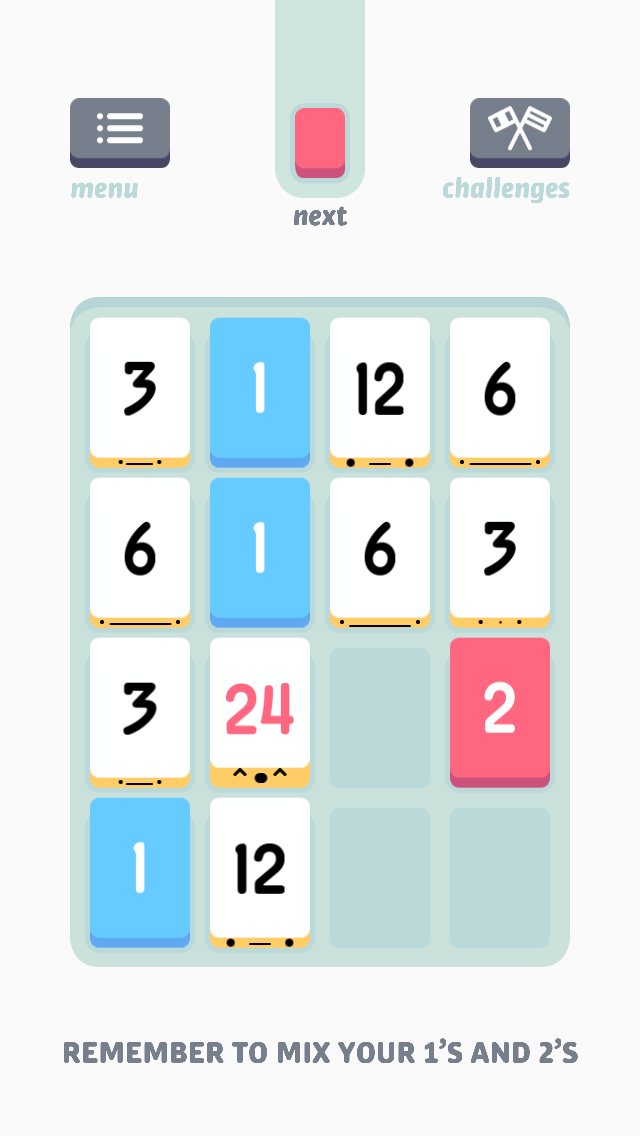
- You don’t have to make a match on every turn. Sometimes the best move is simply sliding a row over to slot in a new tile. If you have the option to match two “12” tiles but strand a “1” in the middle of nowhere, or simply move the “12” row over and get the “1” next to a “2,” opt for the latter. You’ll be able to get the “12”s together in a couple turns and you won’t have a “1” stuck taking up space. The image above is an example of a board that’s not in great shape because too many numbers have become stranded without matches.
- White tiles will usually be small numbers. Once you create a number on a board, it becomes possible that that number will be one of the new tiles thrown at you on a turn. However, high-numbered tiles are rare in this instance. You will almost always get a blue or red “1” or “2,” and if a white tile is up next, it will almost always be a “3” or sometimes a “6.” As you make larger numbers, you’ll see higher numbers occasionally, like “12” or “24,” but these are usually exceptions. If a white tile is on deck, it’s usually safe to assume it will be a “3,” so try to make space near other “3”s.
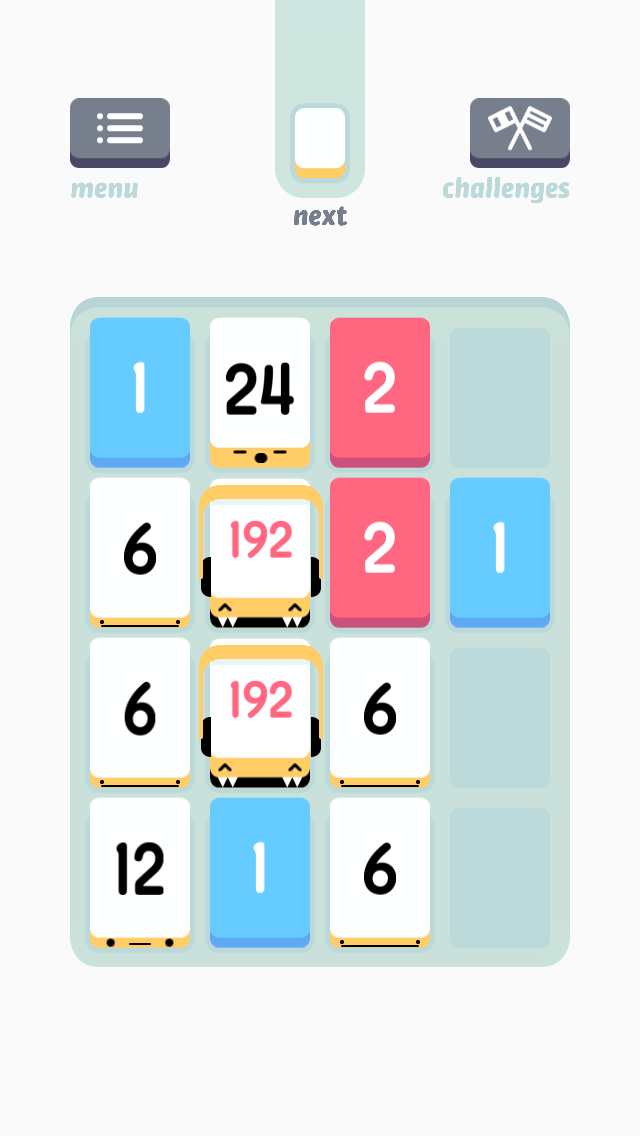
- Focus on one large tile at a time. In the early stages of a game, it’s easy to work on multiple tiles at the same time because you have lots of space to work with—all of your tiles are combinable or easy to make the same. As you build larger numbers, you will quickly run out of space since those tiles take up spots on the board—that “192” will just sit there until you can match it. As you begin running out of space, focus on building up small clusters into one large number. That way, for instance, you won’t have a 48 hogging space on one side and a 96 on the other.
- You can see your current score at any time. Just select the “Challenges” button in the upper-right corner of the game board.
- Luck is a component. Some games, you may keep getting the perfect tile you need for a string of matches. Other games may give you five “1” tiles in a row for no reason. Try not to get too frustrated by the parts of the game you can’t control. If you do keep getting “1”s and “2”s in a bunch, try to keep them near each other if possible, since they will combine together once matched with their missing half.
Congratulations!
You have completed Gamezebo’s quick start guide for Threes! Be sure to check back often for game updates, staff and user reviews, user tips, forums comments, and much more here at Gamezebo!
More articles...
Monopoly GO! Free Rolls – Links For Free Dice
By Glen Fox
Wondering how to get Monopoly GO! free rolls? Well, you’ve come to the right place. In this guide, we provide you with a bunch of tips and tricks to get some free rolls for the hit new mobile game. We’ll …Best Roblox Horror Games to Play Right Now – Updated Weekly
By Adele Wilson
Our Best Roblox Horror Games guide features the scariest and most creative experiences to play right now on the platform!The BEST Roblox Games of The Week – Games You Need To Play!
By Sho Roberts
Our feature shares our pick for the Best Roblox Games of the week! With our feature, we guarantee you'll find something new to play!Type Soul Clan Rarity Guide – All Legendary And Common Clans Listed!
By Nathan Ball
Wondering what your odds of rolling a particular Clan are? Wonder no more, with my handy Type Soul Clan Rarity guide.








 “
“